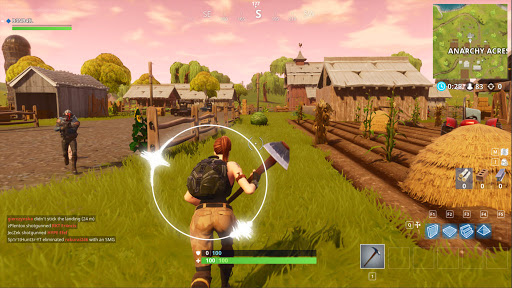Yesterday, the world celebrated the Global Accessibility Awareness Day. Developer and lecturer Alan Zucconi put together a thread with some stats and links to resources on accessibilty in games.
According to Zucconi, the number of people living with a disability exceeds 2 billion. In his thread, he discusses four types of disabilites and the way game developers address them.
Color blindness
In around 300 million colour blind people in the word, deuteranopia is found most often. It affects how people perceive red and green tones. Zucconi cites FTL and Hue as good examples of games that managed to strike a balance between aesthetics and accessibility. Both titles have the option to add patterns to colour-coding, which are generally easier to read.
There’s a detailed guide by Zucconi on designing games with color blind gamers in mind.
Hearing impairment
Outside of adding subtitles to all games featuring dialogues, devs might want to design their UI so as to visualize all the relevant information from audio clues. Fortnite is a good example of how to achieve that.
Cognitive impairment
Cognitive impairment affects thoughts, memory and how information is processed. As a result, puzzle-heavy games or games with a long tasks and a lot of bactracking might become inaccessible. To address this type of disability, Zucconi suggests the following solutions:
- Reminding the player about current objectives and inputs
- Having separate volume controls for effects, speech & music
- Highlighting important words and objects
- Providing the option to remove combat, puzzles & enemies
And exemplary set of accessibility options can be found in Shadow of the Tomb Raider.
Motor impairment
One of the most obvious solutions that improve accessibility is making the controls fully remappable. The developers of Celeste went even further and added options for how many times you can jump in mid-air. Players can even turn invincibility and endless stamina on/off.
An even more profound way to approach this might be to make alternative controllers. Information on custom solutions can be found here and here.
A little extra something
While the thread doesn’t hope to exhaust all existing forms of disability, there are some useful links to articles covering the issue in more detail.
- Game accessibility guidelines
- Designing for Disability playlist by Game Maker’s Toolkit
- Special Effect, UK-based charity helping gamers with physical disabilities
Yet another bonus
Additionally, on Reddit, someone called TitsLoverFromSpace (great username, by the way) recommends Color Oracle color blindness simulator, as well as OpenDyslexic, a typeface designed against some common symptoms of dyslexia.
You might also want to check out Laura K Buzz’s series Access-Ability, in which she discusses some lesser known disabilities.
Finally, Josh Bycer in his latest piece on Accessibility in Game Design argues that accessibility options are “not expensive to implement, especially if you start your game’s development with the mindset of including them.” He cautions, though, against thinking there is a checklist for accessibility: “that if a game has A, B, and C, it’s automatically accessible to everyone.”
There are certain elements that are universal, such as control rebindings, volume sliders, and text size that can fit any videogame. However, accessibility needs to be approached differently for each genre and each gameplay loop; what works in one doesn’t necessarily work in another. For a game to be accessible, it’s important to look at what are the major pain points and walls that are stopping someone from experiencing a game.
owner of game-wisdom.com




